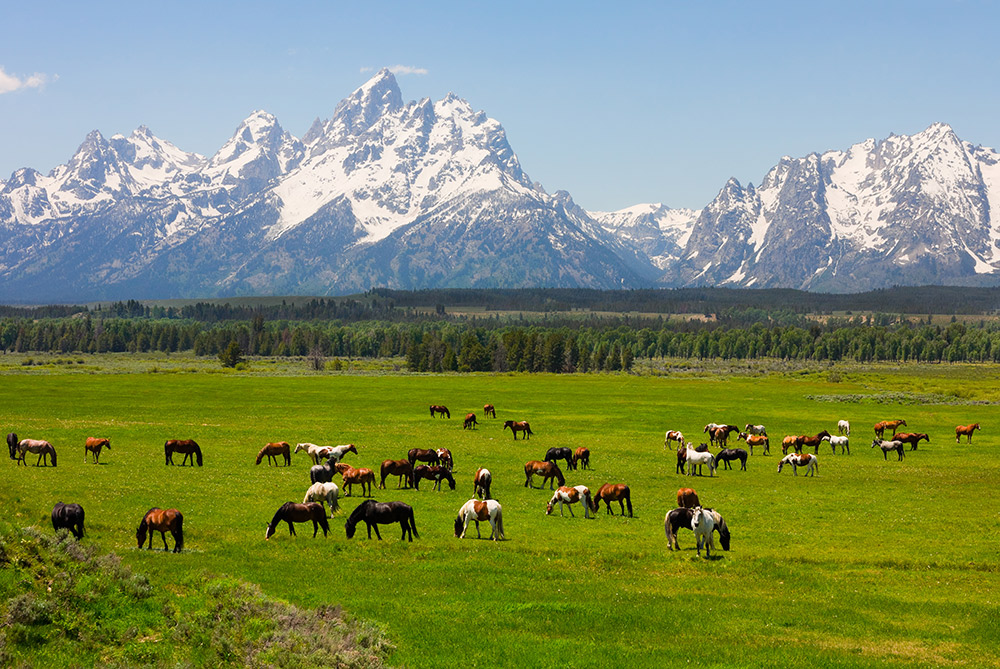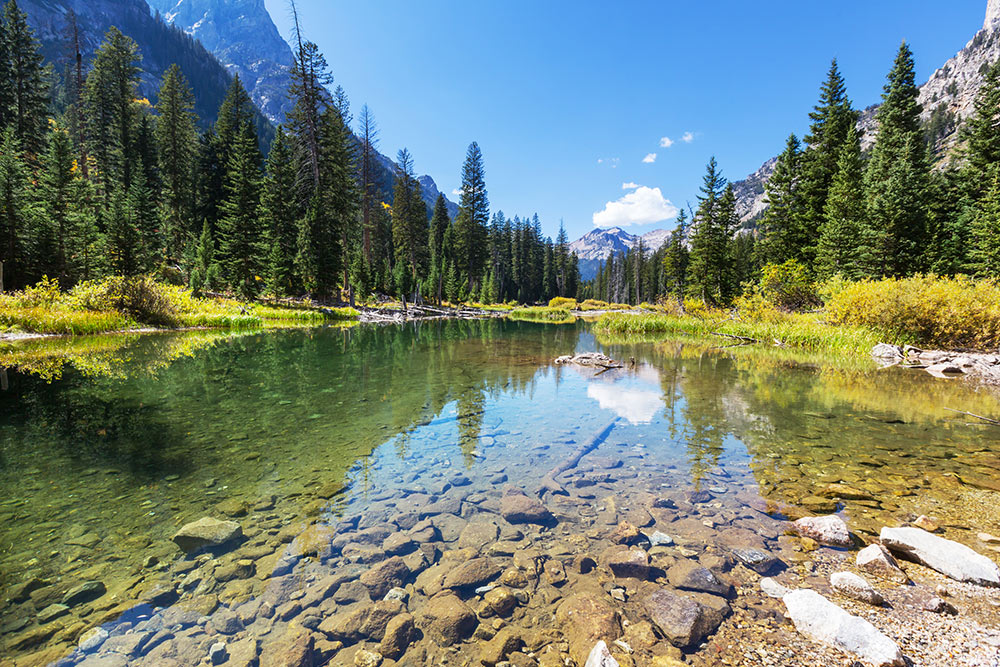Located in northwestern Wyoming, Grand Teton National Park is a vast expanse of mountains, forests, and wetlands covering over 310,000 acres. Each distinct ecosystem harbors its own variety of plant and animal life, allowing the more than 2 million vacationers who visit the park each year to witness firsthand the incredible diversity of the natural world. Those who travel to Grand Teton National Park enjoy some of the richest, most biologically diverse land in the entire country. Here is what you need to know to fully explore the exciting biological diversity of Grand Teton.

ALPINE
Along the park’s western border lies the Teton Range, including Grand Teton, the mountain for which the park was named. This 13,770-foot tall giant and its sister peaks were formed over millions of years, as large earthquakes along the Teton fault caused the ground to rise in slow increments. Today, the range is home to an alpine community of sparse, but exquisitely beautiful plant and animal life.
Harsh conditions and long winters mean few mammals live in the mountains, but visitors to the park can catch sight of majestic bighorn sheep and smaller mammals like the yellow-bellied marmot, which hibernates for over eight months. Although winter months allow for skiing and sleigh rides through the National Elk Refuge, summer is the best time for wildlife observation. Another draw to the alpine portion of the park are the incredible glaciers formed as snowfall after snowfall gathered on the slopes and eventually compressed into ice.
FORESTS
Much of the park consists of dense green forests, which house a wide variety of plant and animal life. The lodgepole pine tree is the most common tree in the park and flourishes due to its unique cones that open and spill their seeds only when heated by fire. This process allows the species to thrive in the aftermath of periodic wildfires.
Animals who inhabit the forests of Grand Teton include black bears, elk, snowshoe hares, and red squirrels. The park’s forests are also home to many species of birds – like the Great Gray Owl, which hunts during the day. Although the weather is rather unpredictable during the springtime, the park is often less crowded, and visitors can enjoy the pleasure of observing Grand Teton wildlife in peace.
WETLANDS
The wetlands of Grand Teton National Park, including many marshes and swamps, are fed each year by runoff from melting snow and abound with vegetation like pond lilies, willows, and cattails. These provide food and shelter for mammals; visitors can catch sight of moose grazing among the willows and playful river otters sporting in the water.

Among the many lakes and rivers that exist in the park is the Snake River, known for scenic river floats and its excellent trout fishing. Although there are five distinct species of trout in the river, only the Snake River cutthroat trout is native to the area.
Grand Teton National Park is filled with breathtaking scenery in a variety of ecosystems, providing visitors with the opportunity to witness a broad range of animal life and geographic features. Each season opens the door to the mostly untouched natural beauty of the park available to all who explore Grand Teton National Park.